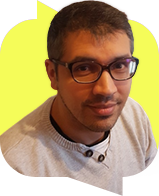
The Greatest Website Page Builders: Making Beautiful Pages Simple Having

Responsive design enhances user experience, accessibility, and SEO by improving website adaptability to various devices.
In today’s mobile-first world, responsive design is essential for any website that wants to remain relevant and competitive.
It allows companies to connect with users on a deeper level, providing them with an easy-to-use interface that adapts to their individual needs and preferences.
This means that the site will adjust its layout and features to fit the screen of the device being used.
Responsive websites offer a better user experience leading to increased engagement and sales.
Finally, responsive websites are also beneficial for search engine optimization (SEO). With a mobile-friendly design, your site is more likely to rank higher in search engine results pages, which can lead to increased visibility and traffic.
Test on multiple devices: Test your design on multiple devices to ensure that your design is optimized for all screen sizes.
Optimize your responsive website with enough time and resources to improve user experience and boost business returns.
Dynamic imagery and typography are becoming popular trends. They adjust to different screen sizes, providing better viewing experiences. Websites can now be more flexible and responsive.
Another trend is the integration of chatbots and AI technology to enhance the user experience. These technologies enable businesses to provide customers with more personalised experiences, thus building better relationships, and improving customer satisfaction.
Finally, designers are using more vibrant, bold colours in their work, reflecting today’s more confident, expressive, and playful world. This trend is transforming the look and feel of websites while boosting branding.

Author

The Greatest Website Page Builders: Making Beautiful Pages Simple Having

Top 10 Web Hosting Providers: Your Ultimate Guide to Finding
Ananass offers professional web design services for businesses, delivering visually stunning and user-friendly websites. Whether it’s a new project or a revamp, our experienced team is dedicated to fulfilling your specific requirements. We believe in open communication and collaborative partnerships. For technical support, inquiries, or discussing your project ideas, our responsive and knowledgeable staff is committed to providing prompt and reliable assistance. Contact us today and let’s embark on a successful web design journey together.
Nous sommes ravis de vous accompagner dans la création de votre site web.